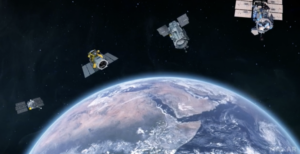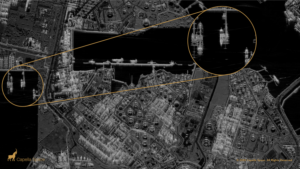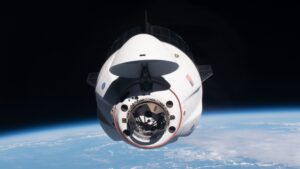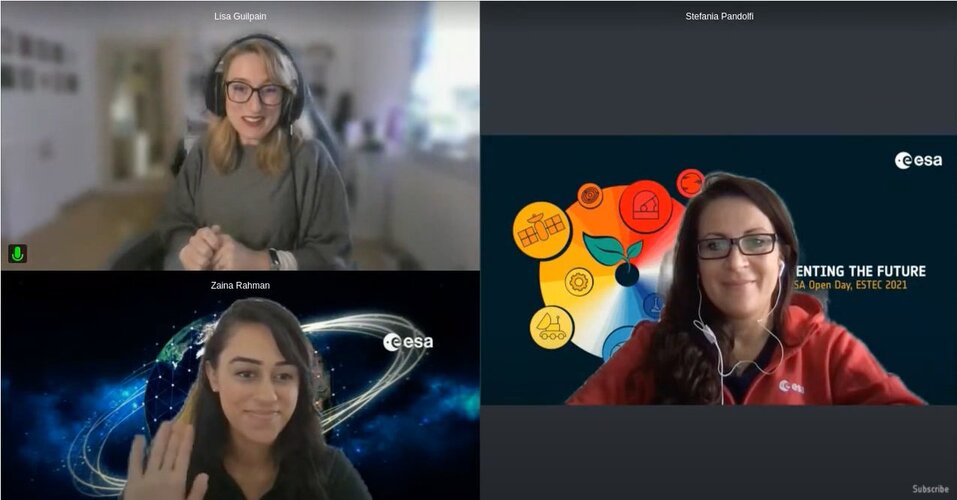Maxar still confident Legion constellation will be in orbit in 2022
Thursday, 07 October 2021 20:41
Maxar remains confident that it will launch all six of its next-generation WorldView Legion imaging satellites in 2022,
Less restrictive 'bioburden' rules would make some Mars missions simpler
Thursday, 07 October 2021 17:57
Industry has more work ahead to make data analytics less dependent on human supervision
Thursday, 07 October 2021 17:13NRO begins journey toward commercial data program of record
Thursday, 07 October 2021 17:11
The National Reconnaissance Office is preparing to survey commercial capabilities to provide various geospatial datasets as part of a long-term campaign to establish a new program of record.
Samples returned by Chang'e-5 reveal key age of moon rocks
Thursday, 07 October 2021 17:00
A lunar probe launched by the Chinese space agency recently brought back the first fresh samples of rock and debris from the moon in more than 40 years. Now an international team of scientists—including an expert from Washington University in St. Louis—has determined the age of these moon rocks at close to 1.97 billion years old.
"It is the perfect sample to close a 2-billion-year gap," said Brad Jolliff, the Scott Rudolph Professor of Earth and Planetary Sciences in Arts & Sciences and director of the university's McDonnell Center for the Space Sciences. Jolliff is a U.S.-based co-author of an analysis of the new moon rocks led by the Chinese Academy of Geological Sciences, published Oct. 7 in the journal Science.
The age determination is among the first scientific results reported from the successful Chang'e-5 mission, which was designed to collect and return to Earth rocks from some of the youngest volcanic surfaces on the moon.
NRO to tap commercial industry for space-based radar data
Thursday, 07 October 2021 16:36
The director of the National Reconnaissance Office Christopher Scolese announced Oct. 7 the agency will start buying space radar imagery from commercial providers.
Taiwan’s TiSPACE to try again after launch attempt ends in flames
Thursday, 07 October 2021 15:50
Launch startup Taiwan Innovative Space Inc.’s quest to field a commercial smallsat launcher suffered a setback last month when a suborbital prototype of a planned orbital rocket caught fire during liftoff.
Intelligence agencies seek resilient and reliable commercial tools
Thursday, 07 October 2021 15:27
U.S. intelligence agencies are eager to adopt cutting-edge commercial tools and technologies, but need confidence in the security of the data delivered, Stacey Dixon, U.S. principal deputy director of national intelligence, said Oct. 6 at the GEOINT 2021 Symposium here.
Father of ERS wins Nobel prize in physics
Thursday, 07 October 2021 13:30
The Royal Swedish Academy of Sciences has awarded a share of this year’s Nobel Prize in Physics to Klaus Hasselmann in acknowledgment of his contribution to ‘the physical modelling of Earth’s climate, quantifying variability and reliably predicting global warming’. Among Prof. Hasselmann’s long list of outstanding achievements, ESA also recognises him as one of the ‘fathers’ of ESA’s first Earth observation mission, ERS-1, which has been key to understanding our changing planet and which paved the way to modern techniques in observing Earth from space.
Watch live: ESA Φ-week
Thursday, 07 October 2021 13:00
Focusing on the New Space economy and innovations in Earth observation, ESA’s fourth Φ-week kicks off on Monday 11 October. Join us live for two of the main sessions: the Opening session on Monday at 10:30 CEST and the Blending New Space Technologies and Services session on Tuesday at 16:00 CEST.
Maxar looks to fill demand for accurate 3D mapping for autonomous vehicles
Thursday, 07 October 2021 12:26
Maxar has produced high-fidelity maps for military customers, and is now positioning to fill a growing demand for this technology in commercial markets.
Space hunt begins as Western Australia's Binar-1 mission takes next giant leap
Thursday, 07 October 2021 11:21
Western Australia's homegrown spacecraft, Binar-1, has been shot into the vacuum of space- deployed into Low Earth Orbit from the International Space Station (ISS), five weeks after blasting off from Cape Canaveral in Florida.
Director of Curtin's Space Science and Technology Centre (SSTC), John Curtin Distinguished Professor Phil Bland, joined SSTC staff and students yesterday to watch a live feed as Binar-1 was placed into the tiny airlock of the Japanese Experiment Module Kibo on the ISS and sent into space.
Professor Bland explained WA's first homegrown spacecraft is now on a journey to make first contact before testing critical systems, collecting data and taking photographs from 400 kilometers above Earth.
"The launch of WA's first homegrown spacecraft on the Space-X rocket was exciting, but this moment and the coming few days are the really crucial points for our Binar Space Program and the team of staff and students who designed and built Binar-1 from scratch," Professor Bland said.
"We can't wait to hear Binar-1's 'first words' from space—that will be the time when we will be able to declare the success of our first space-mission and put us firmly on the path to proving that our technology can deliver.
Study demonstrates lunar composition mapping capabilities of spectrograph instrument
Thursday, 07 October 2021 11:18
NASA reshuffles commercial crew astronaut assignments because of Starliner delays
Thursday, 07 October 2021 11:05
NASA has reassigned two astronauts from Boeing commercial crew missions to a SpaceX one as the agency addresses delays in the development of the CST-100 Starliner and works out a seat barter agreement with Russia.



